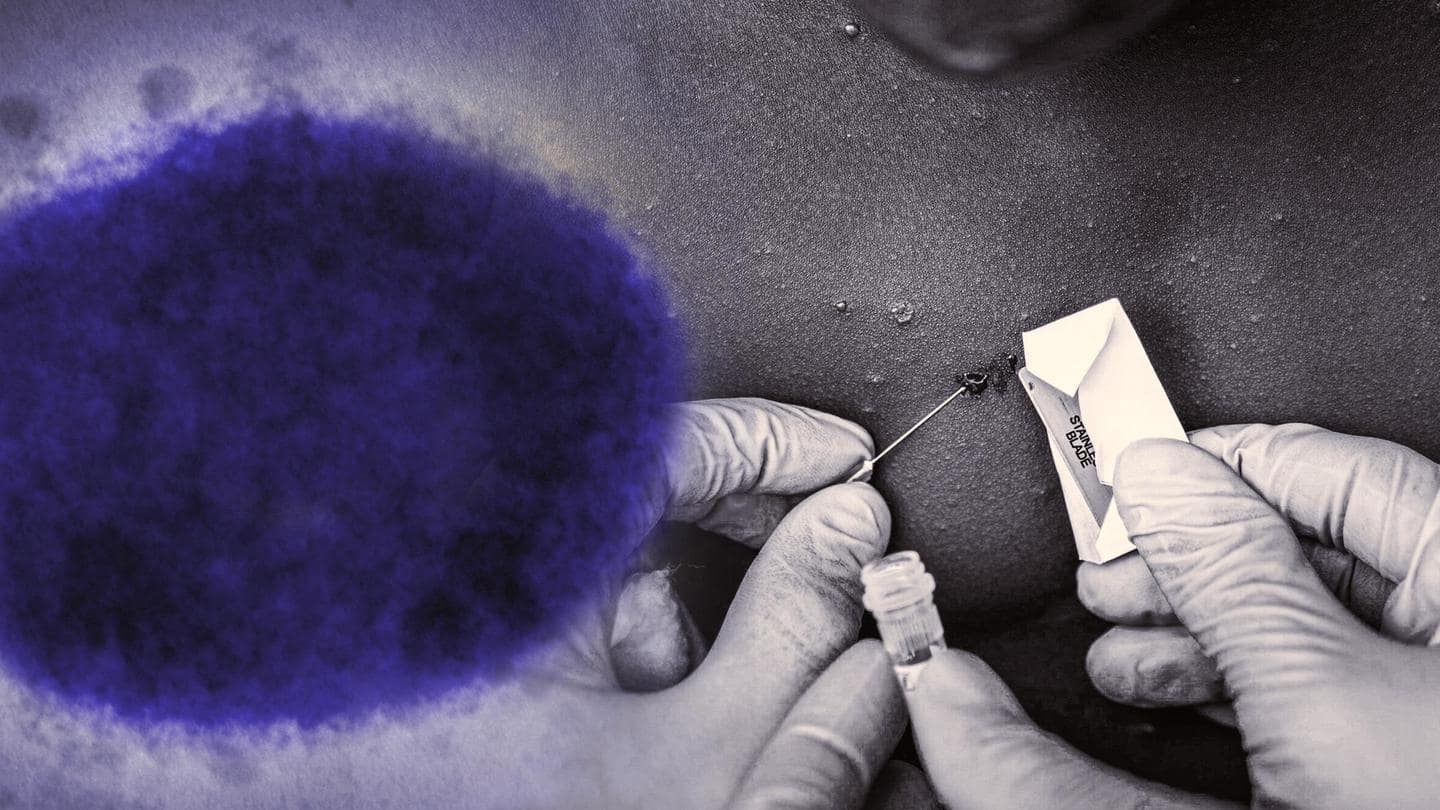
Monkeypox spreads tentacles: US, Canada, Spain, and Portugal confirm cases
What's the story
After the UK confirmed a rare monkeypox infection earlier this month, more cases have been detected in the US, Canada, Spain, and Portugal.
While eight people are believed to be infected in Spain, five have caught the infection in Portugal.
The US reported its first case in a man from Massachusetts, who had recently traveled to Canada.
Context
Why does this story matter?
Even as the world is grappling with the COVID-19 outbreak, sporadic incidences of other viruses like monkeypox have become a cause for concern.
Though monkeypox, said to have its roots in West Africa, belongs to the same family as the smallpox-causing virus, it's less severe with lower infection chances.
However, rising cases in Europe are alarming as it is occasionally known to spread elsewhere.
Europe
Most cases reported in young gay and bisexual men
The emergence of cases in Spain and Portugal could be the first global outbreak of monkeypox.
According to reports, all the young men who have been infected have self-identified themselves as gay or bisexual prompting European investigators to look into the possibility of the infection spreading through sexual contact.
British health authorities had also identified four cases among gay and bisexual men in London.
CDC
'US case poses no risk to public'
In the case of the Massachusetts patient, confirmatory testing was completed at the US Centers for Disease Control and Prevention (CDC).
The Department of Public Health and the CDC are working on identifying the individuals who may have contacted him while he was infected.
Meanwhile, officials said he poses no risk to the public and is responding well to the treatment in the hospital.
Transmission
Monkeypox said to have its roots in West Africa
Until now, monkeypox was confined to travelers and their relatives returning from West and Central Africa.
With the virus rapidly spreading in Europe, experts are trying to ascertain how so many people are getting infected.
Experts are puzzled because the nine cases in the UK (as of Wednesday) have no known connection with each other.
Experts
Why is the virus spreading now?
Experts believe the likely scenario behind the rise in cases is increased travel after the easing of the COVID-19 restrictions.
"My working theory would be that there's a lot of it about in West and Central Africa, travel has resumed, and that's why more cases," said Jimmy Whitworth, a professor of international public health at the London School of Hygiene and Tropical Medicine.
WHO says
What exactly is monkeypox?
Monkeypox is a viral zoonotic disease mostly transmitted to humans from animals.
Most cases of the monkeypox infection are found in West and Central Africa.
According to the World Health Organization (WHO), it is similar to human smallpox.
Although monkeypox is said to be much milder than smallpox, with a mortality rate of up to 10%, it can be fatal in some rare cases.
History
First human case of monkeypox identified in 1970
The first case of human monkeypox was identified in 1970 in Congo (formerly known as Zaire) in a nine-year-old boy, two years after smallpox had been eradicated from the region.
Since then, most cases have been reported from rainforest regions of the Congo Basin, where it is considered endemic.
Causes
How do humans catch it?
If a person comes in direct contact with the blood, bodily fluids, or skin lesions of an infected animal, they are likely to contract monkeypox.
In Africa, human infections have been documented through the handling of infected monkeys, Gambian pouched rats, and squirrels.
Eating half-cooked meat and other products of an infected animal could also pose a risk.
Community chain transmission
Secondary or human-to-human transmission of monkeypox
Even though limited, secondary human-to-human transmission can result from close contact with the skin lesions of an infected person or objects recently contaminated by the patient.
It can be transmitted through respiratory particles via prolonged face-to-face contact.
Transmission can also happen via the placenta from mother to fetus—called congenital monkeypox.
The biggest-ever documented community chain transmission witnessed six successive person-to-person infections, said the WHO.
Fever and rashes
Symptoms of monkeypox
According to the WHO, the incubation period is usually 7−14 days but can range between 5−21 days, too.
Following this, fever, rash, severe headache, backache, muscle aches, intense asthenia (lack of energy), and swollen lymph nodes kick in.
Apart from the face, rashes affect the palms of the hands, soles of the feet, oral mucous membranes, genitalia, conjunctivas, and cornea, as per the WHO.
WHO and CDC
Treatment and vaccine
Currently, there's no specific treatment recommended for monkeypox, says the WHO.
But the US CDC says, monkeypox outbreaks can be controlled with the smallpox vaccine cidofovir—ST-246—and vaccinia immune globulin.
However, first-generation smallpox vaccines are no longer available to the public.
Notably, in 2019, a new vaccinia-based vaccine was approved for preventing smallpox and monkeypox but it isn't yet widely available, as per the WHO.